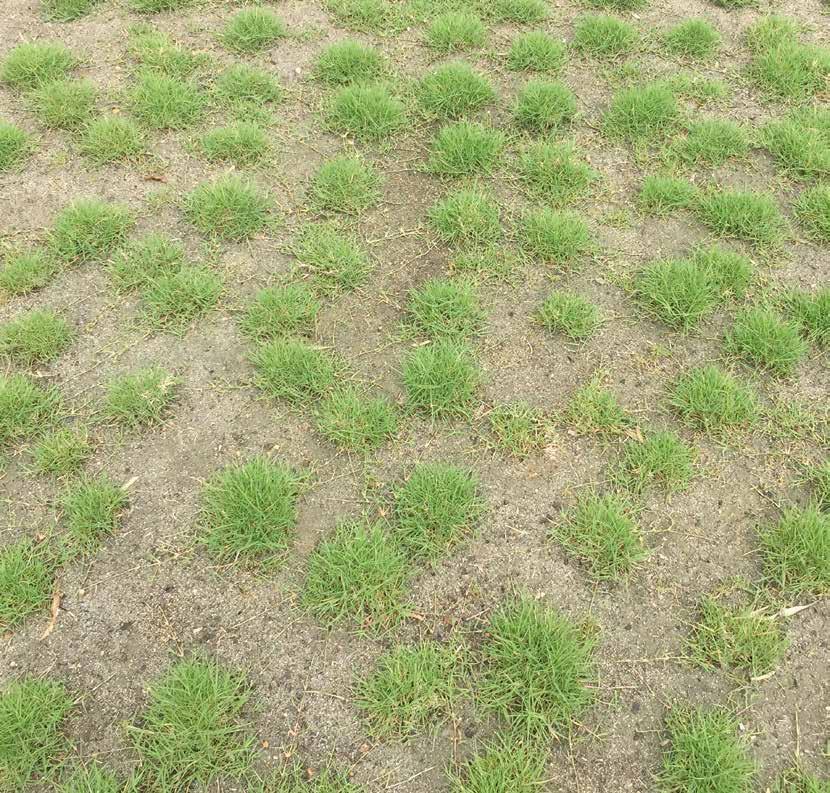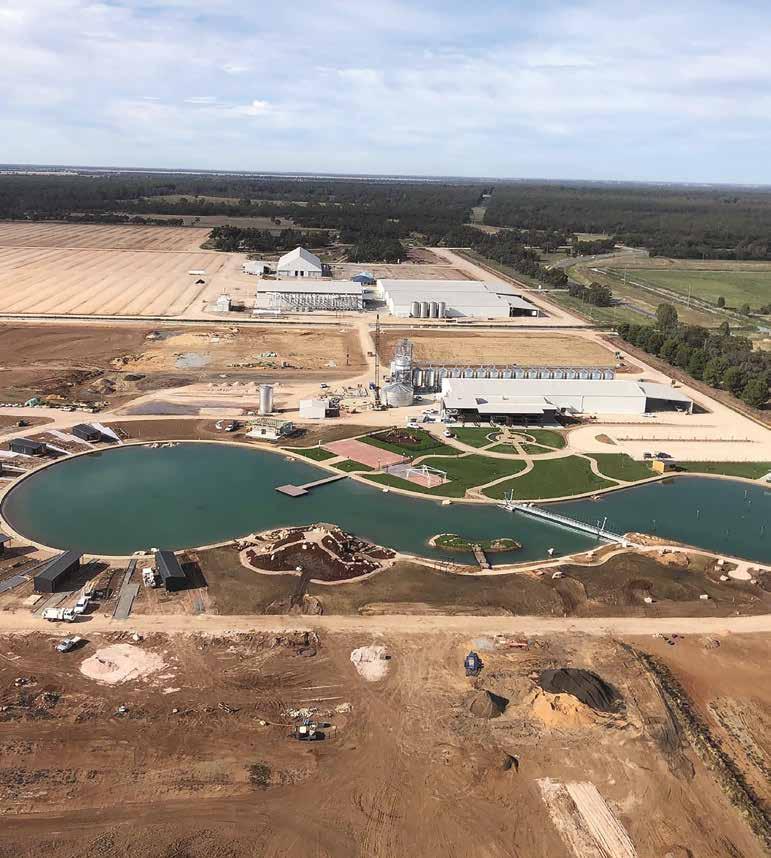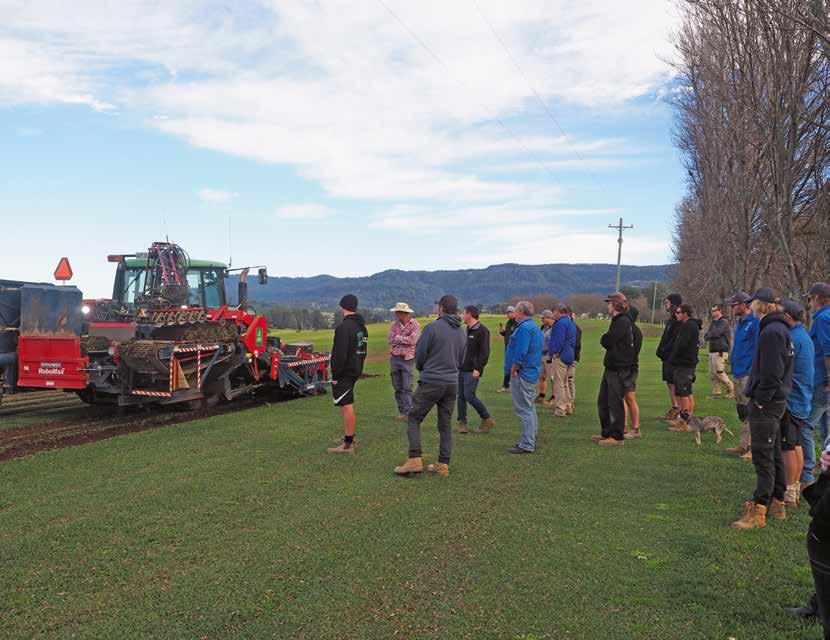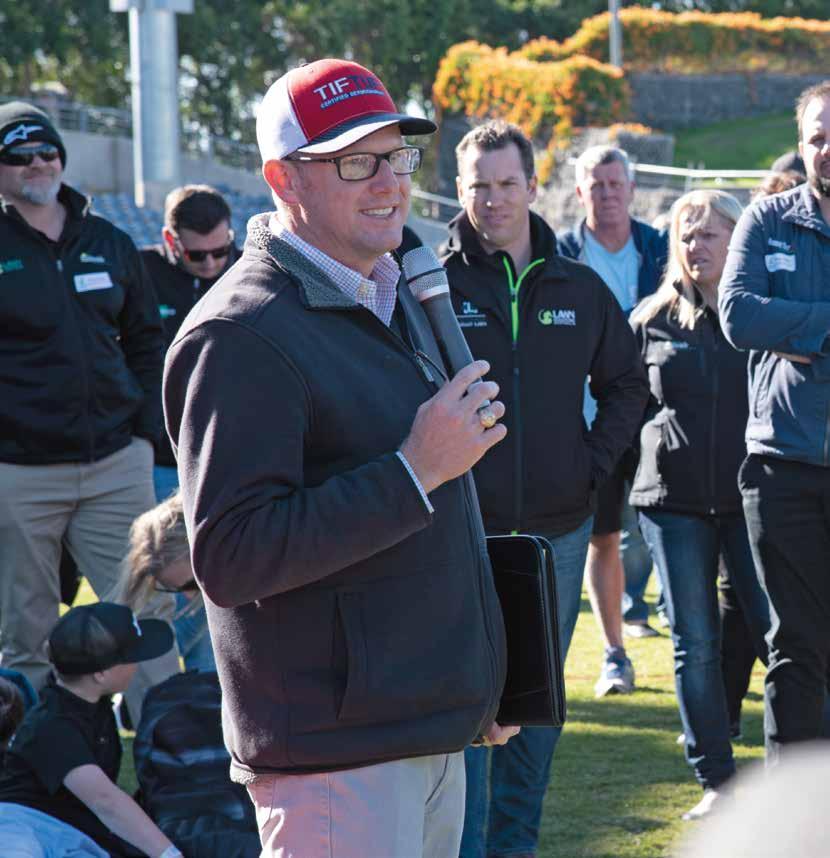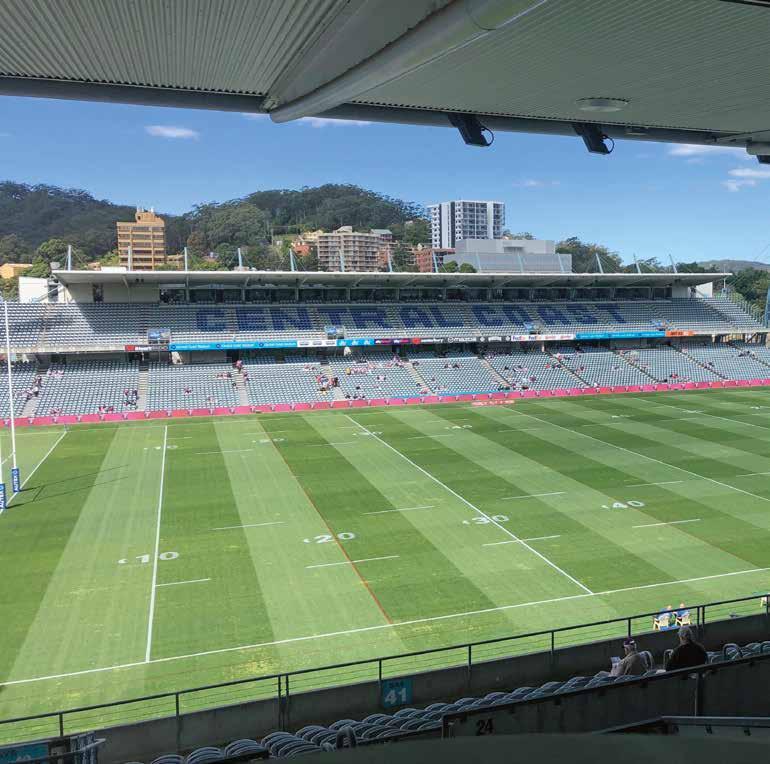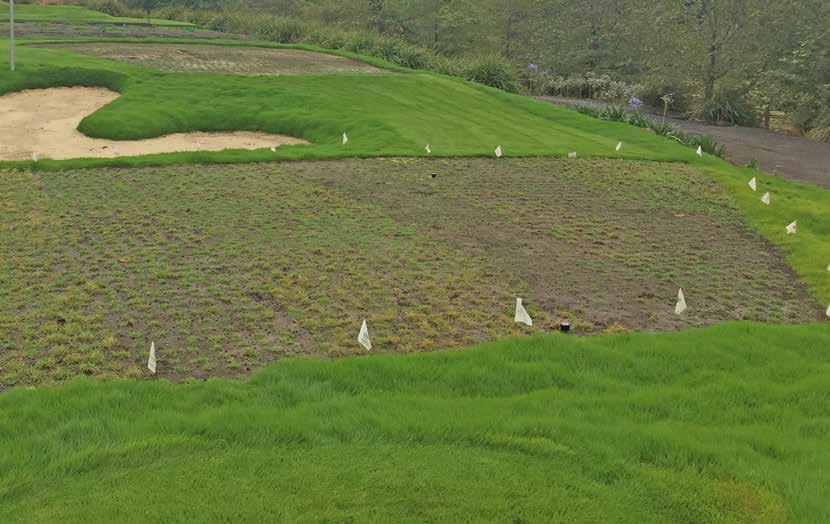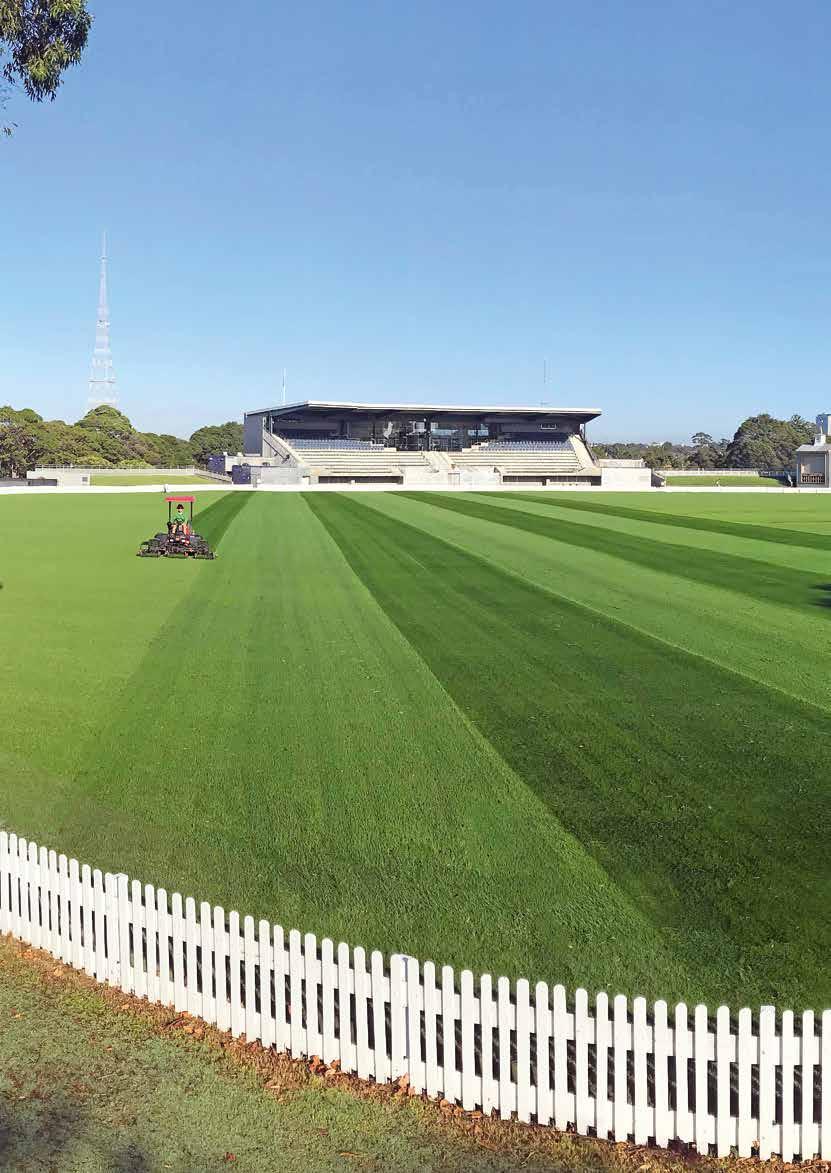
7 minute read
DR BRETT MORRIS ON ZOYSIA
For the Love of Zoysia
By Dr Brett Morris - Technical Manager, Australian Agribusiness
Advertisement
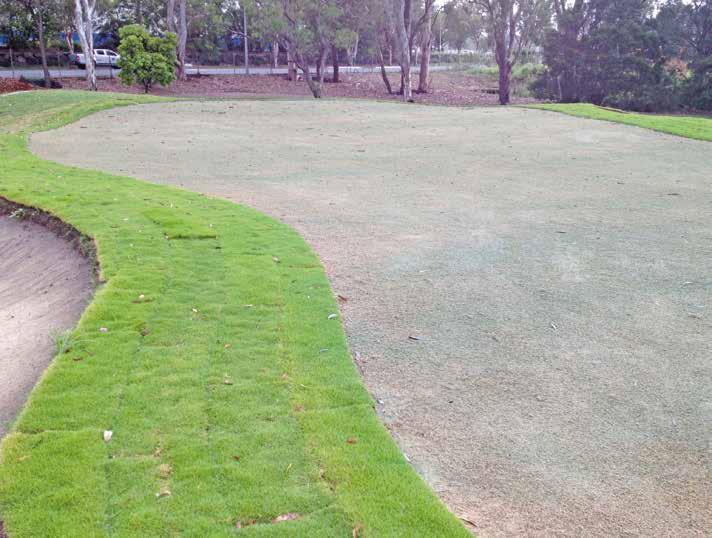
‘Dad, you have a crush on zoysia’. It’s a common line I hear from my 11-yearold daughter whenever I see it at a local garden centre or when I tend to mine in the backyard. It is a grass that first piqued my interest during my apprenticeship when I started attending block release at Grovely TAFE in Brisbane in 1991. Around the facility there were some garden beds with clumps of Z. pacifica and it wasn’t uncommon to see the new greenkeeping students running their hands through the clumps at lunchtime talking about how good it would be to have greens with this on it.
Seven years later I found myself Superintendent at the Sheraton Denarau Island Golf and Racquet Club in Fiji. Over time I started to notice this different grass coming into the right side of the fairway at the dogleg on hole 4. Dense, beautiful colour, able to crowd out weeds and was resistant to concerns with the tropical rains – it had everything. It turned out to be a local zoysia but before I could do anything with it the next Sheraton move took us to Indonesia. We were back again in Fiji in early 2019 and the patches today make up most of the fairway beyond the dogleg and even into the green now. A beautiful ecotype waiting to be utilized more in the South Pacific.
I took over at Klub Golf Rimba Irian, Indonesia, in 1999 following the departure of Brad Burgess. Brad outlined the initial works to start using another local zoysia ecotype on the course in the August 2020 edition of Turf Talk. One of the main challenges in growing turf at Klub Golf Rimba Irian (Rimba means jungle) apart from the heat and humidity was the shade from the jungle rising 25 – 30m beside the fairways. Couple this with the daily rainfall, which in the calendar year of 2000 totaled 9.8 metres, and turf management was a real challenge. Brad had converted tee tops and a handful of fairways and it wasn’t hard to see the benefit between those and the original Tifway 419 fairways in terms of conversion. So, we set about converting the remainder using primarily the Par 5 2nd as our ‘nursery’. Our process was fairly simple starting with scalping down the 419. Staff would then hand scarify and collect stolons from 2 and then sprig the fairway as you would a typical warm season golf green. The stolons were then pushed into the profile using a tow behind slicer before the members played preferred lies by means of teeing the ball up for 4 weeks. Watering was taken care of by the daily rain. At around week 4 – 5 we started to see new shoots emerging and from there it was away. Knowing its preference for lower nutrient inputs we were able to encourage it over the 419 through selective feeding, providing around 1/3 to 1/2 the normal rate of N we would normally apply. Zoysia on the tees then at time had grown down the banks providing a good stockpile for use to turf cut and re-lay onto bunker faces. The conversion gave us better surfaces, better definition and lower inputs.
At Brisbane GC following the flood in 2011, we took the opportunity introduce it to the membership as a means of controlling encroachment into greens. Following either resurfacing or reconstruction of a green, we solid turfed the surrounds with Z. matrella. On greens such as 6 where we rebuilt the entire complex, we extended the zoysia use around surrounding bunkers which provided outstanding definition. More importantly, we had the strong backing from the membership to continue.
The fertility aspect is one advantage of zoysia which is often spoken about due to its natural colour. Differing cultivars of Z. japonica will likely require higher fertility rates than Z. matrella but are purely dependent on usage. More herbicides
are becoming registered for use on zoysia for a variety of weeds and we routinely screen new (and old) formulations for label expansions.
It has been encouraging to see the benefits and recognition of zoysia in recent years. Hopefully it will result in more uptake provided enough research in local conditions has been applied. Having dealt with Boards of golf clubs over the years it takes a well-researched argument to convince them of change when discussing introducing a new turf variety. NTEP trials may be a good starting point, but nothing beats an exhibition green, tee or surface somewhere locally that a Superintendent can take their Board members to see, experience and play on in person. Such sites are then ideal for researchers to evaluate many maintenance aspects required to keep the turf in top condition, feeding back data to support the Superintendent and Boards in their decision making. Hopefully Superintendent and sports turf management associations can come on board collectively to support locations for works like this.
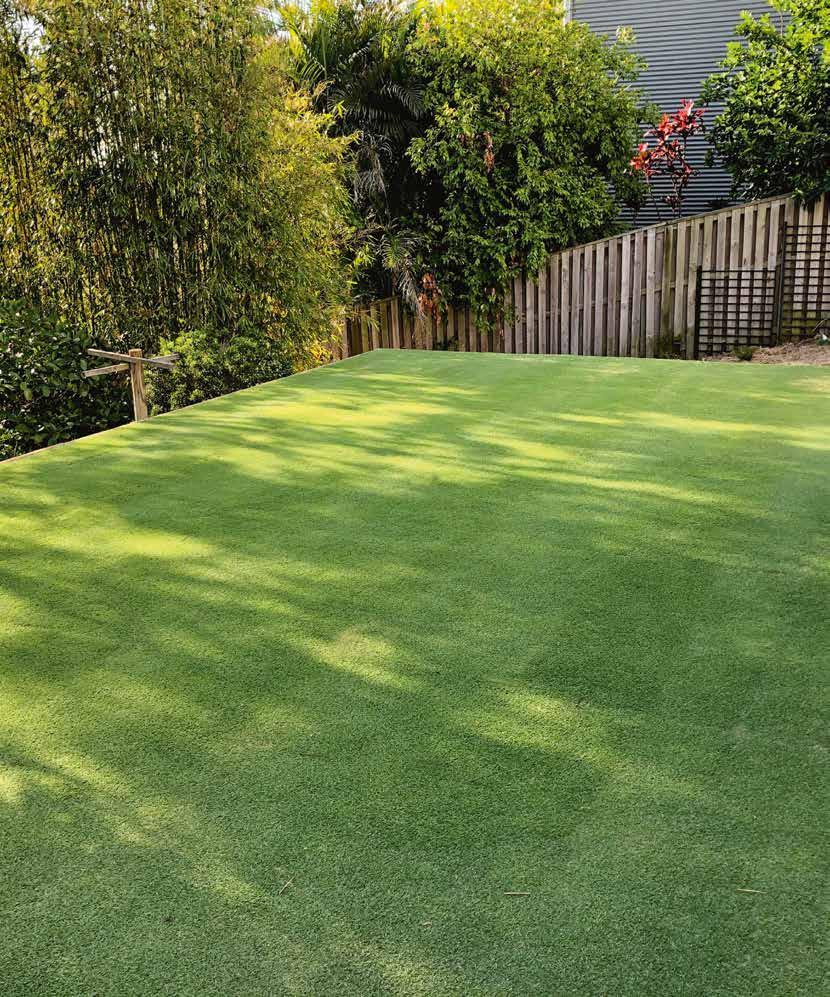
It’s funny when I talk to people about my new back lawn. I did my Ph. D in plant breeding and the results were a few outstanding kikuyu hybrids. People have often said that I should have planted those on my home lawn as a topical point, but my first choice was zoysia and I laid Trinity during the middle of winter 2020. I’m growing it on a USGA profile and it’s first cut was at 5mm. Over spring/summer of 2020 and beyond I’m looking forward to learning more about it by testing its limits and I’m more than happy to share my findings. My initial reasoning (which I told my wife) was to level out the back lawn and provide a better entertaining area. But after first experiencing it as a Superintendent over 20 years ago, I secretly wanted an area which I could run different trials to learn more about it. As we all know with trials some are successful and some not, but one thing is for sure, my crush will be taken care of.
We know downtime is not an option.
TRIMAX MOWERS ARE BUILT STRONG AND BUILT TO LAST.
The sleek design of Trimax mowing systems may have you wondering if they can hold up to your hard work. It’s easy to be confused when so many other manufacturers use heavy duty welded panels in their mowing decks and huge amounts of steel in the chassis. But Trimax uses revolutionary design techniques to ensure that our mowers are tough enough to handle even your most demanding jobs year after year.
Trimax Mowing Systems owner and founder Bob Sievwright says it best: “We believe equipment should never be a barrier to success.” That’s why we engineer Trimax mowers to a higher standard, building on 40 years of innovation to deliver products that satisfy your requirements and exceed your expectations.
A Snake S2 mower set up to undergo lift and lower testing for durability and strength Like modern automobiles, Trimax mowers are designed, analysed and tested to perform. Our engineers use powerful stress simulation software to optimise the strength of each critical component. Meticulously designed and evaluated structures provide rigid support to the mowing deck without adding extra weight that can unduly compact your turf.
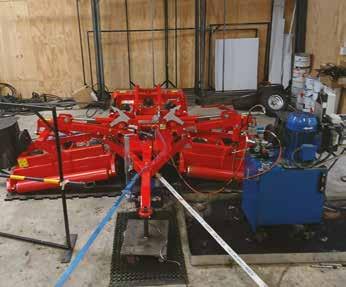
The optimised weight of Trimax mowers also requires less horsepower to tow, leading to savings in fuel consumption and overall cost of operation.
Accelerated wear and cycle testing validates the strength and durability of Trimax mower and component designs. Parts are placed in specially designed rigs and exposed to rigorous loading conditions for thousands of cycles. The successful results confirm that your Trimax mower won’t encounter failures leading to downtime in the course of normal operation, even if your normal is in challenging conditions. We’re so confident in the endurance of our mowers that we offer a 3-year warranty – the longest in the industry.
Of course, a great mower isn’t just tough – it also delivers a pristine finish. A clean cut relies on consistent and accurate positioning of the mower blades no matter what obstacles your terrain presents.
Trimax rotary mowers use floating spindle seats to ensure
A stress simulation analysis on a bracket used in the transport of Pegasus mowers
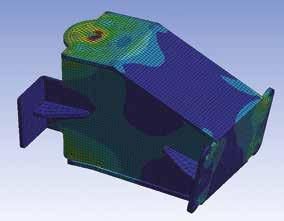
accurate mounting that is insulated from assembly warp or damage. Each spindle is carefully placed for uniformity and precision during the assembly process.
The datum marking of each Trimax mowing deck guarantees an accurate height adjustment and reset every time, even after service or maintenance in the field. A quality cut has never been easier to achieve.
We know that downtime is not an option for our hard-working customers. We invest in your feedback – both global and marketspecific – to ensure that our innovations are driven by your needs. Trimax mowers are built to keep you moving forward.
For more information, contact Trimax Mowing Systems
info@trimaxmowers.com.au www.trimaxmowers.com.au


